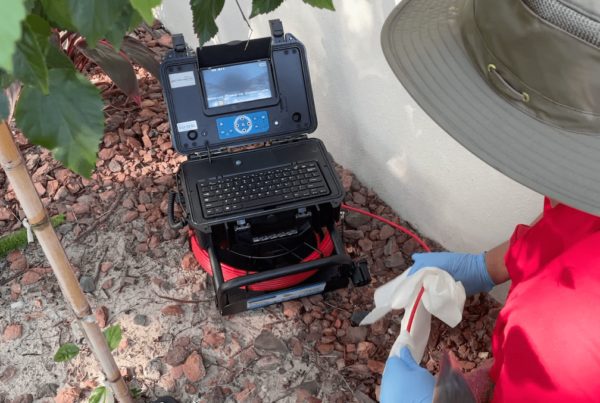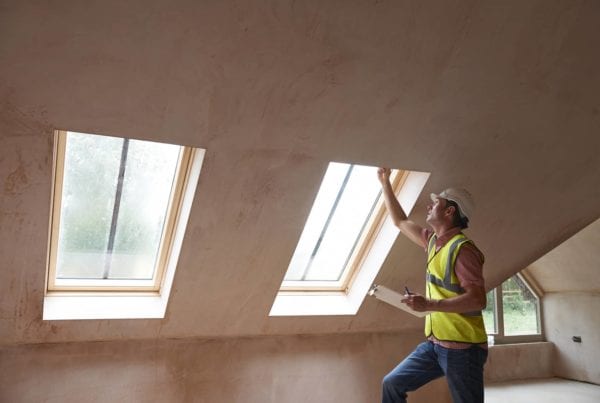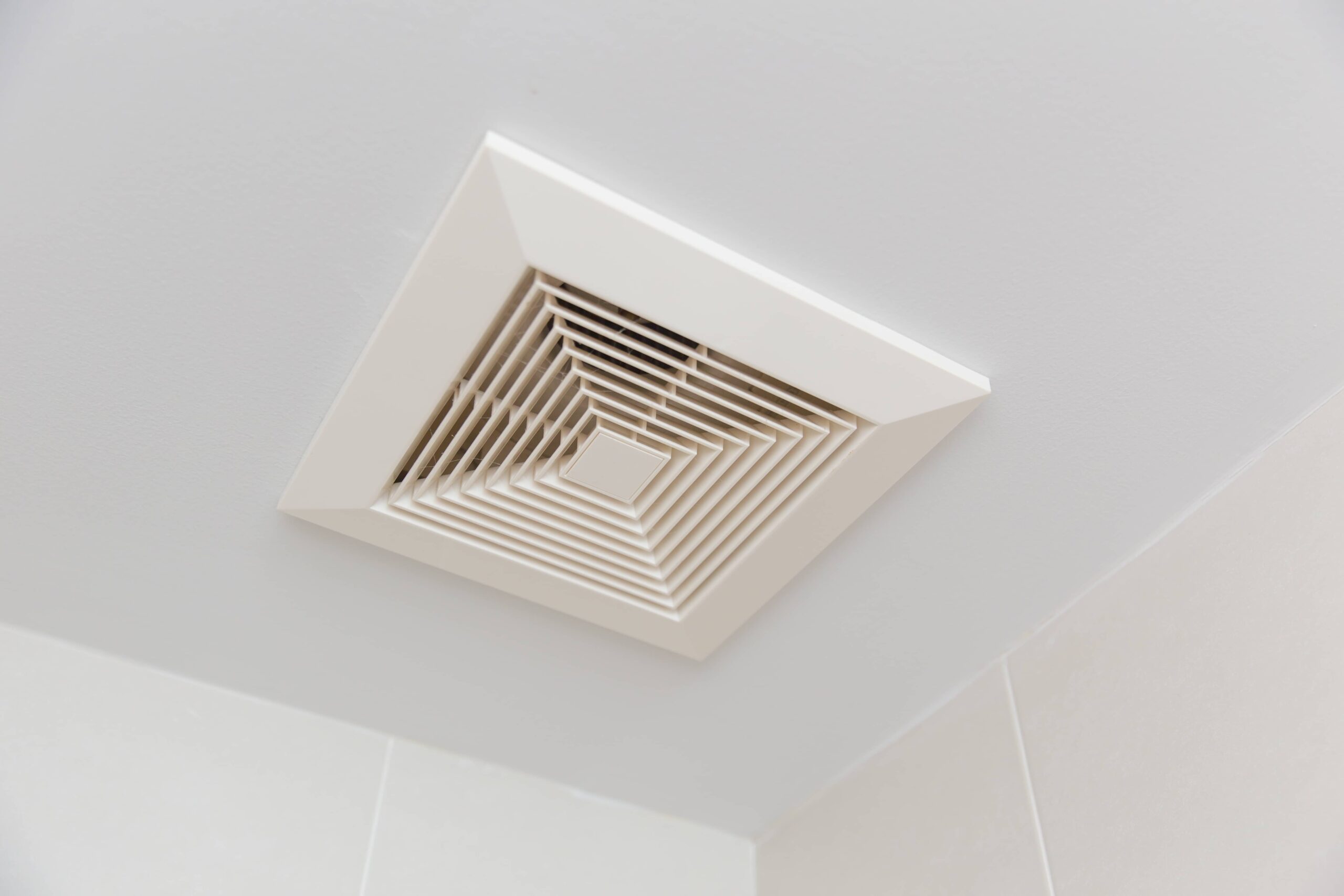
Did you know that bathroom exhaust vents discharging into your attic can cause mold? Moreover, it can cause water stains on your ceilings that could lead you to believe you have a roof leak.
Bathroom vents should always be vented to the exterior of your home and it is required by code.
Let’s talk about why this is code and why we seem to consistently find bathroom vents discharging into the attic space.
The Code of Bathroom Exhaust Fans
First off, it is code to have your bathroom vents venting to the exterior. This is what the International Residential Code (2006) says specifically about bathroom vents:
– The air removed by every mechanical exhaust system shall be discharged to the outdoors.
Source
– Air shall not be exhausted into an attic (except whole house ventilation), soffit, ridge vent or crawl space.
Why Is This Code?
The major reason why this is code is having to do with air quality and energy efficiency in your home.
Energy Efficiency
If you keep warm, humid air from your shower inside your home, your air conditioner has to work harder to remove humidity and keep the home cooler.
Air Quality
It is easier to remove contaminants from the air by just discharging it immediately. Moreover, the air in your home should not be too humid as to condense inside your home.
Discharging bathroom exhausts inside your home can allow for condensing and the spread of contaminants.
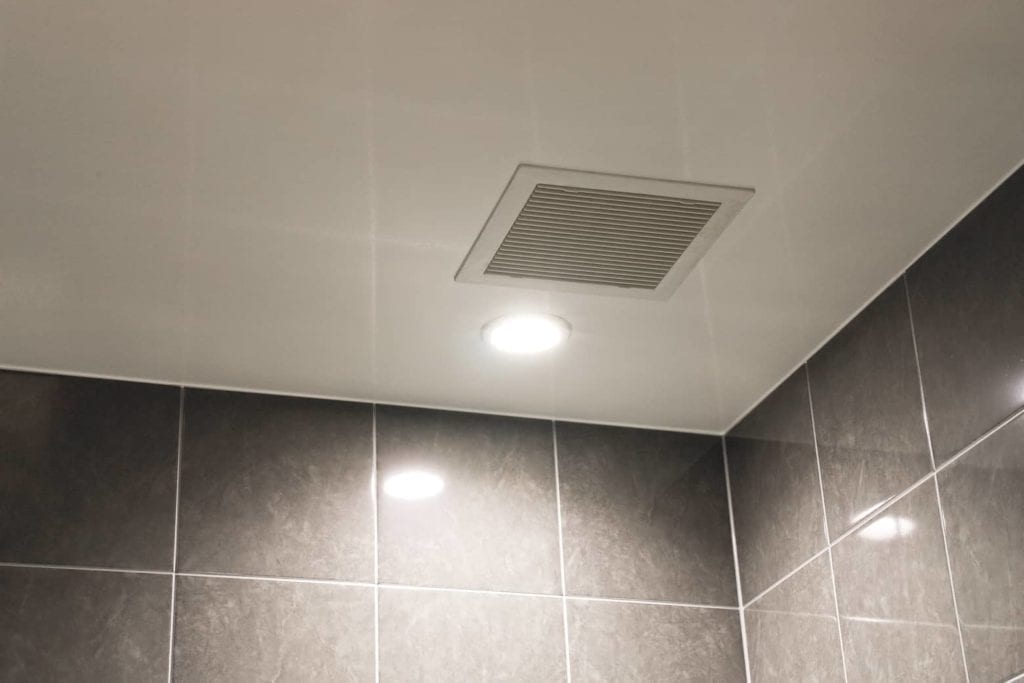
What If It Discharges Into The Attic?
Discharging bathroom exhaust fans is almost no different than exhausting the air into your home. However, there are a few key insights you should know.
Different Climates Affect Condensing of Air
As mentioned above, one of the larger reasons why we do not discharge bathroom vents into attics is condensing of humid air. If the hot humid air in from your shower gets into your attic, you risk the air condensing, causing mold, or stains on your ceiling.
However, different climates can affect the rate at which this occurs. For example, northern, non-humid climates would have the air condense quickly and cause mold.
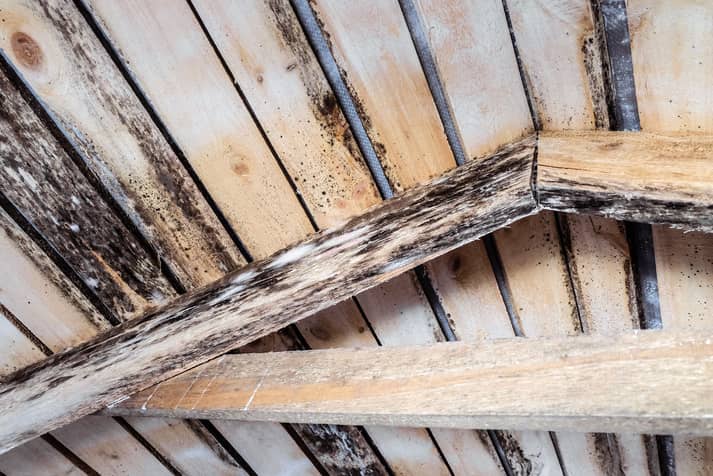
On the other hand, if you are near the beach in Florida, the air is already super warm and humid so the risk of condensing in your attic is low. Plus, you already might have some mold in your attic.
Therefore, it is common among Florida contractors to discharge bathroom exhaust fans into attics even though it’s code not too!
Why Discharge a Bathroom Fan Into An Attic?
So some contractors still discharge bathroom fans into attics. Why exactly?
Well, in order to discharge the vent to the exterior you technically have to put a hole in a roof, flash it properly, and ensure it does not leak. In general, if you ever have a roof leak, it is from the penetrations that go through your roof.
So, contractors decide it is a lesser evil to just discharge the bathroom exhaust fans into the attic and point it to an attic vent like the soffit or ridge vent rather than put a hole in the room. Not to mention, it costs extra money to discharge the fan through the roof due to labor and material cost.
In southern, humid climates this may not be a big deal. In northern, dry climates, this may be more of an issue.
What Should You Do?
If you are not in a hot and humid climate like Florida, you should most definitely vent your bathroom exhaust fan to the exterior.
Venting the fan to a soffit vent or to the ridge vent is not enough as air can easily be sucked back into the attic or the air could condense too quickly.
If you are in a climate like Florida, you should still vent it to the exterior. Why? Because, it’s required.
But, in my professional opinion, it’s not really the biggest deal ever. If you do do it, just point the vent at the ridge vent. Also know however, we will still write it up in our home inspection reports!
Thanks for reading, comment below if you have questions!


